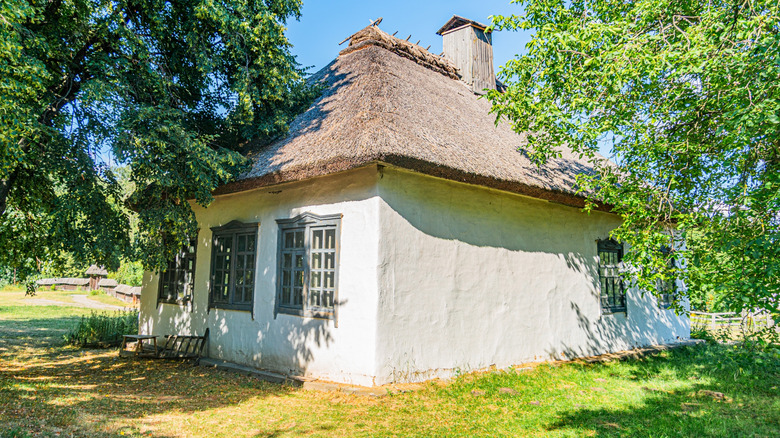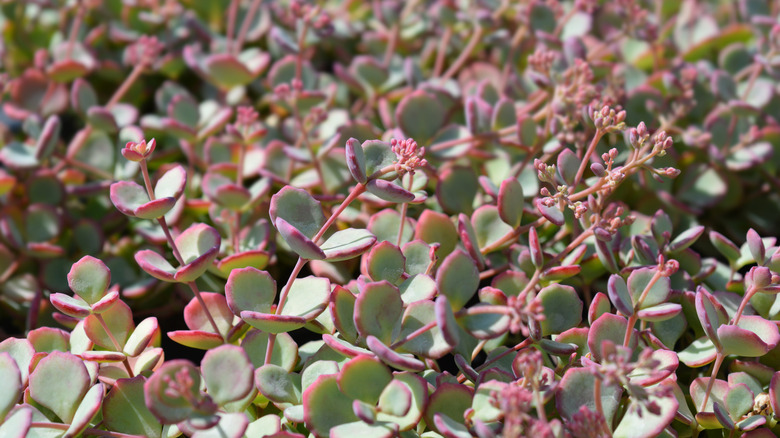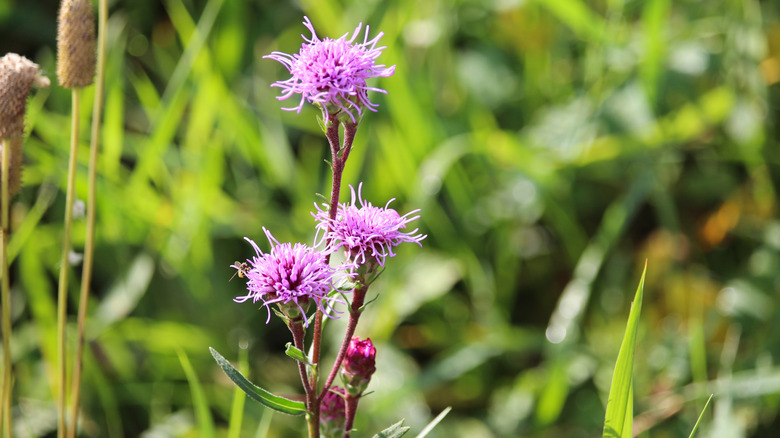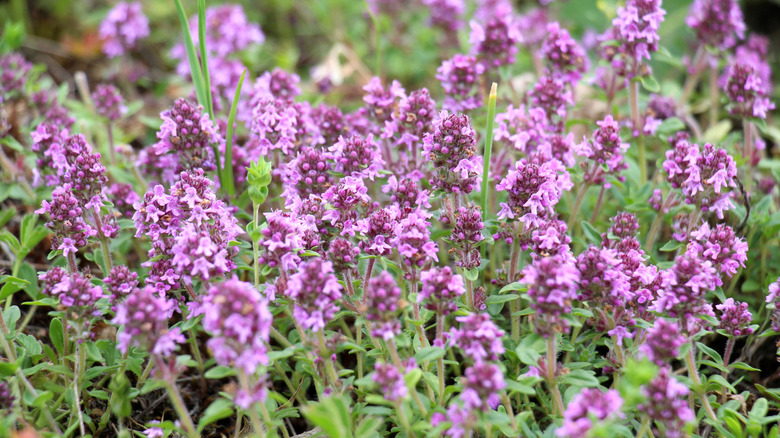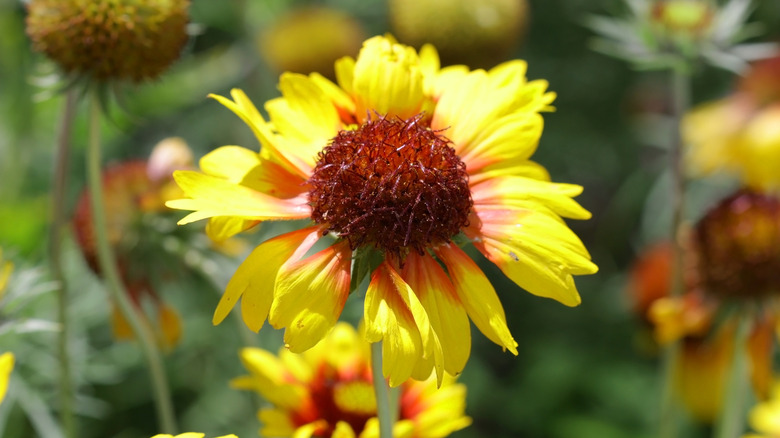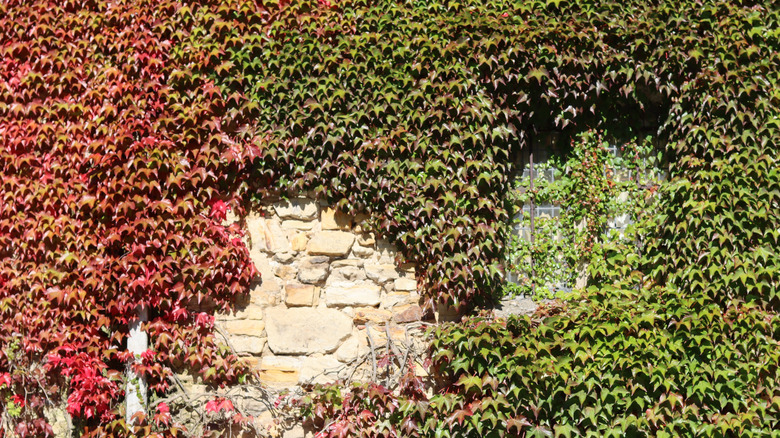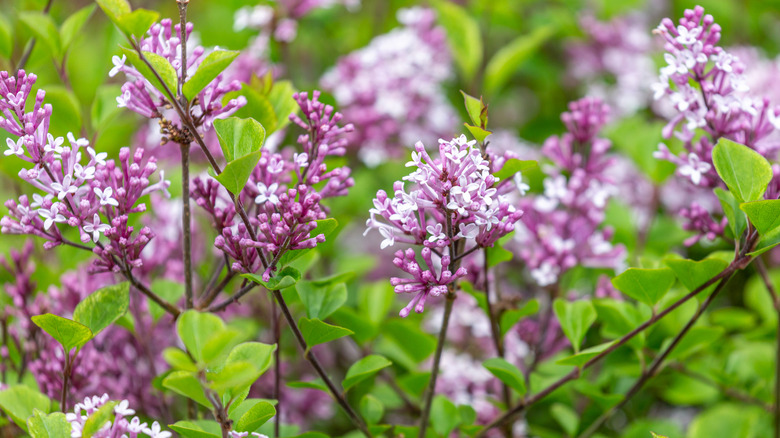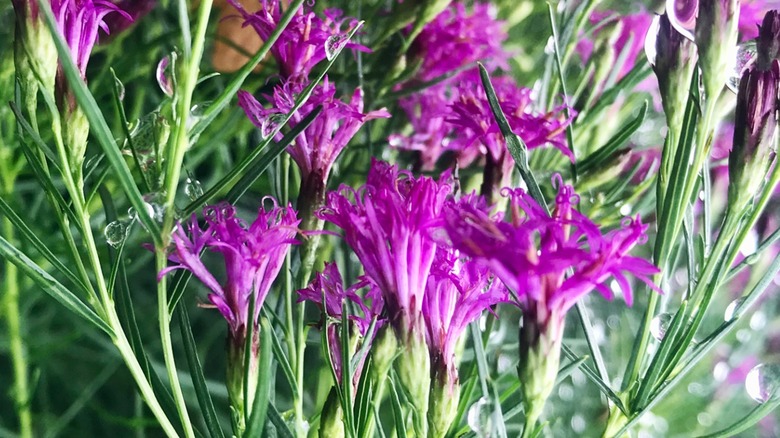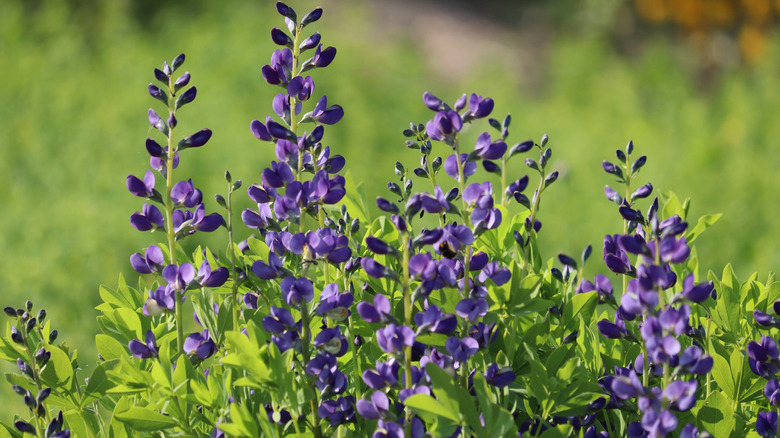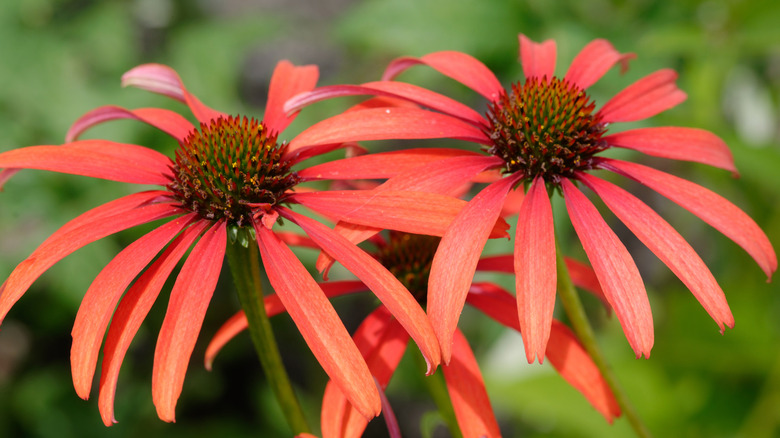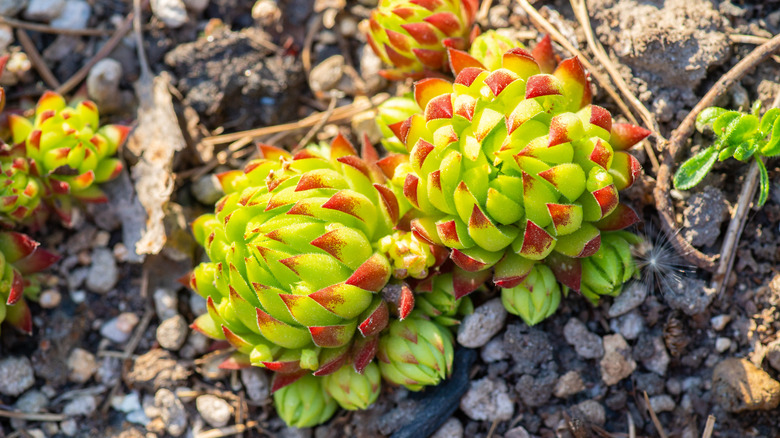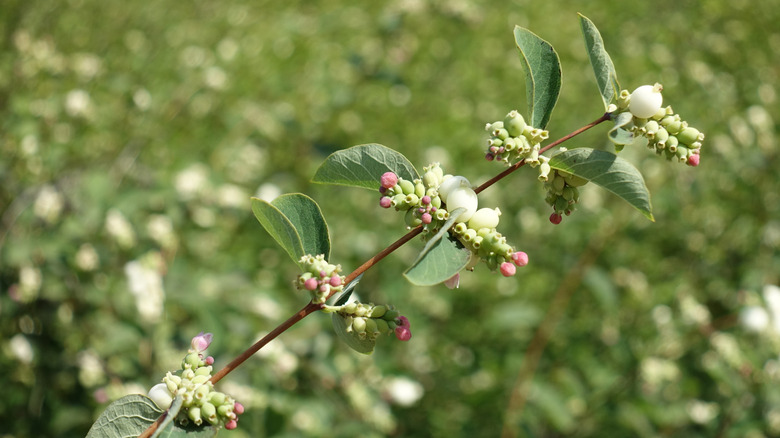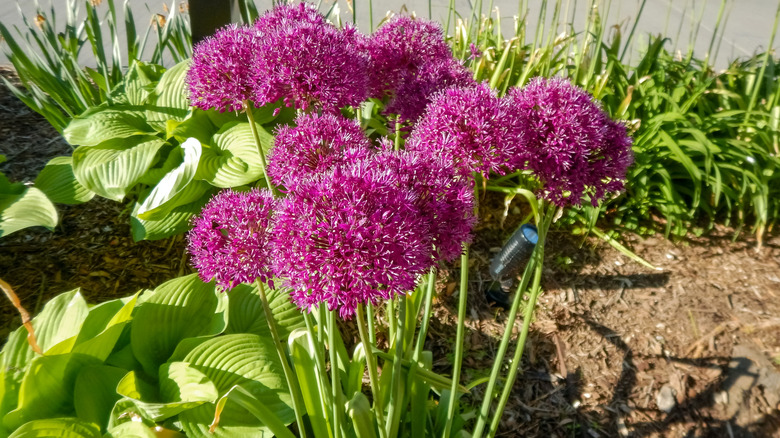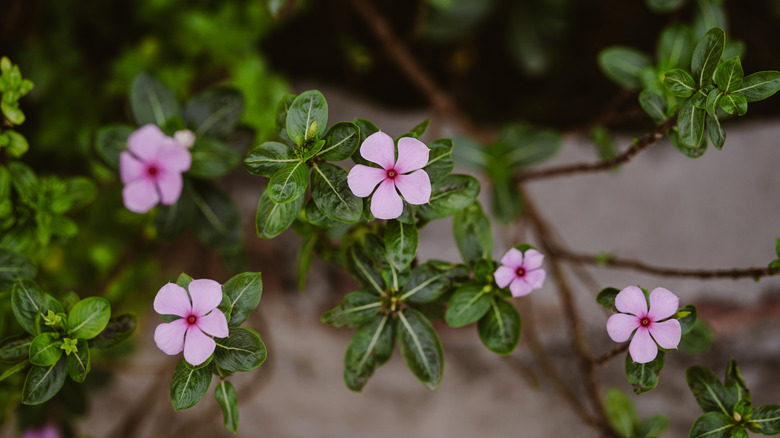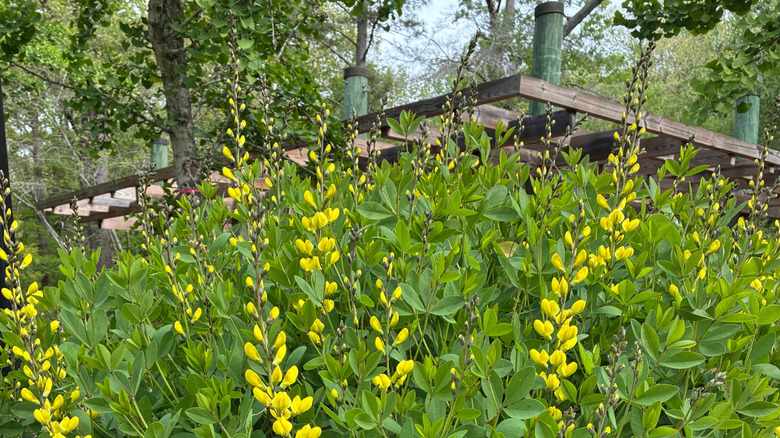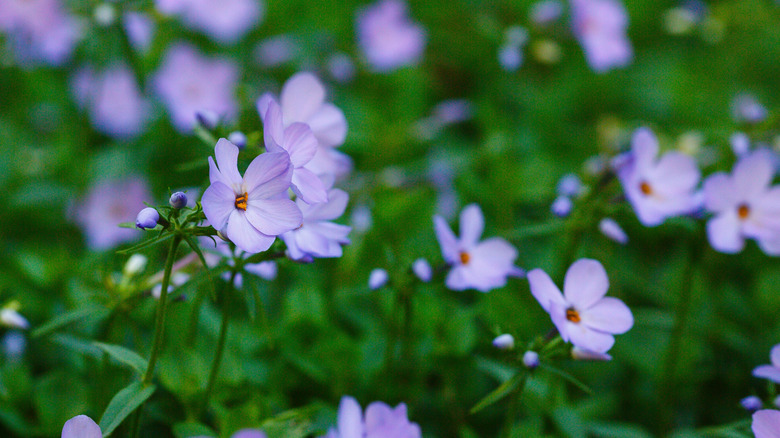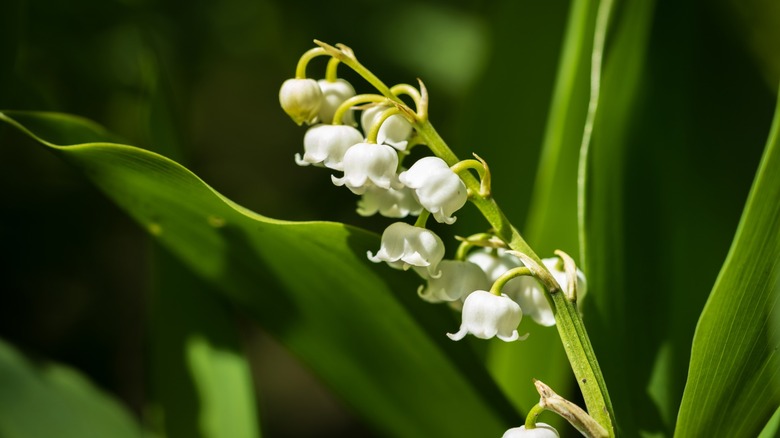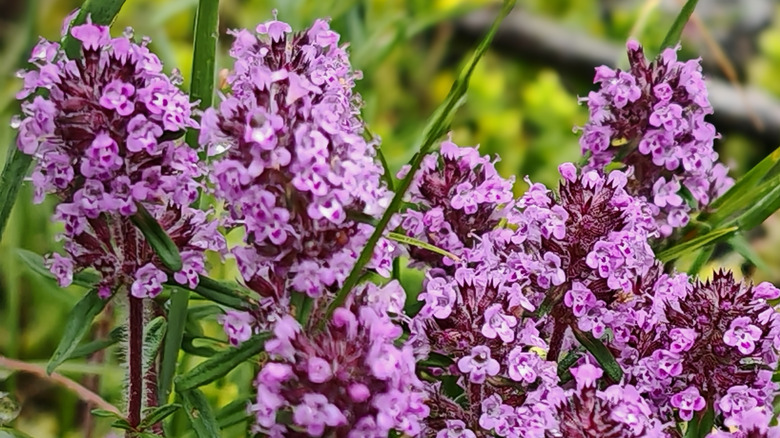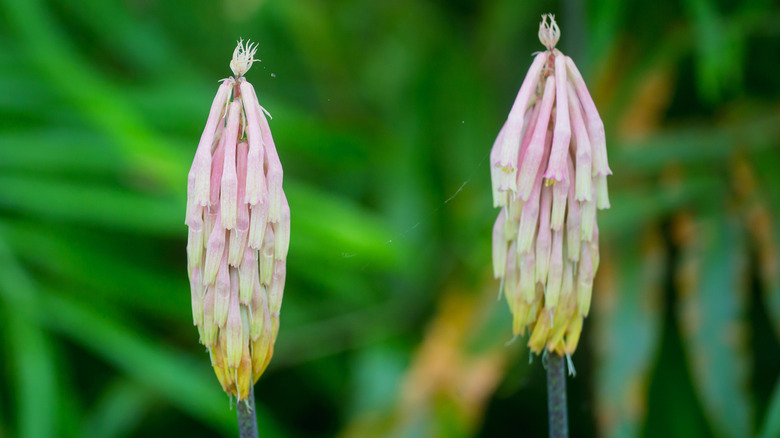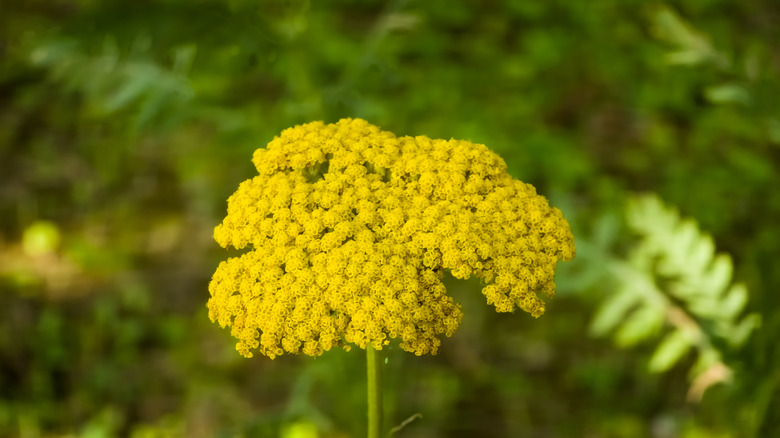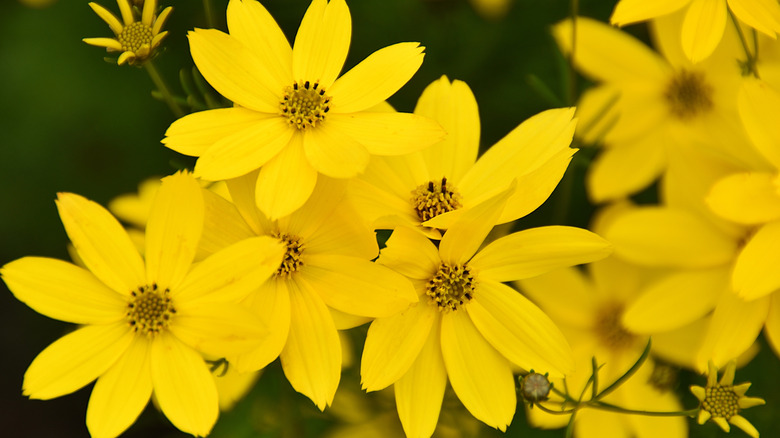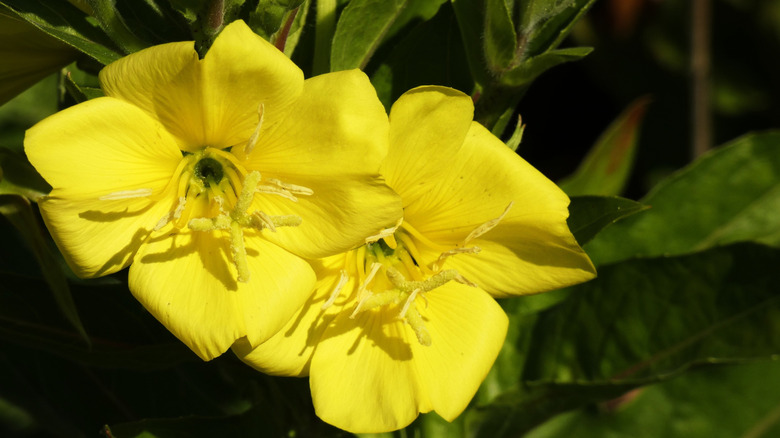21 Underrated Perennials That'll Effortlessly Transform Patchy Garden Areas
Perennials that transform patchy garden areas can do more than simply fill space — they can bring structure, color, and seasonal rhythm to spots that often frustrate gardeners. Unlike annuals, which need replanting each year, perennials return reliably. Their roots and crowns persist through winter and send up new growth every spring, which makes them practical for covering bare soil, while their varied bloom times and foliage textures create lasting interest across the growing season. For filling gaps, perennials like creeping thyme, Missouri primrose, and snowberry, are resilient, efficient choices.
Patchy gardens often result from a mix of environmental stressors. Thin growth may come from compacted soil, insufficient water, or repeated foot traffic. Brown or bare spots can also develop from winter drying, salt damage, or heavy dog use, and all of these issues can cause grass to fail to recover in spring. Identifying these issues explains why certain areas struggle and highlights the value of hardy perennials that can withstand conditions where turf or annuals may fail.
When perennials are tolerant of dry soil and drought, they become especially valuable in these patches. Hot, exposed areas or neglected corners of a garden often resist most plants, but drought-hardy perennials can thrive by themselves once established and require less supplemental water and care. With the right placement and minimal maintenance, they can continue to spread and cover ground, turning a once-problematic patch into a thriving display. Their deep root systems also encourage resilience in fluctuating weather, helping them hold their own during summer dry spells.
Japanese stonecrop
Japanese stonecrop (Hylotelephium sieboldii) is a hardy perennial groundcover that grows well in patchy garden spaces or can fill gaps in your garden. It's native to rocky cliffs in Japan, it forms low, arching mounds just 6 to 9 inches tall, spreading up to 1 1/2 feet wide. Its blue-green foliage are edged in pink in spring to summer, and its star-shaped pink flowers help brighten gardens in fall. With excellent drought tolerance and a preference for sandy or loamy soils, it excels in USDA Hardiness zones 3 to 9. This resilient plant is a colorful solution for dry areas.
Meadow blazing star
Meadow blazing star (Liatris sqarrulosa) is a hardy native perennial that is suited to filling patchy garden spaces. Found across the central and eastern United States in zones 6 to 9, it can be seen growing in meadows, but it also enjoys rocky, dry soil. Gardeners can expect to see its blooms appear in late summer, filling the empty spaces of their gardens with pink and purple-lavender flowers into the fall. It can tolerate drought, heat, and humidity, making it an amazingly adaptable plant.
Creeping thyme
Creeping thyme (Thymus serpyllum) is a groundcover that is as tough as it is graceful. Just a few inches tall, it spreads itself across rocky or sandy soils, weaving itself into cracks in the earth and softening bare patches with its fine, blue-green foliage. In summer, it blooms with tiny bell-shaped flowers in shades of pink to purple — it's a wonderful plant for butterfly gardens, as it is a host plant for the common blue butterfly and the large blue butterfly. Hardy in zones 4 to 9, it tolerates drought, poor soils, and even mild winter cold.
Lanceleaf blanket flower
Lanceleaf blanket flower (Gaillardia aestivalis) is one of the best plants to grow in shallow soil, and it can tolerate dry and sandy soils, making it perfect for covering up any damaged or sparse patches of land in your garden. This sun-loving perennial is native to the southern and central United States, growing in clumps that are around 18 inches tall and 1 foot wide with yellow blooms that appear from late spring to fall. Hardy in zones 8 to 10, it can tolerate drought and dry conditions, making it dependable in tough sites.
Boston ivy
Boston ivy (Parthenocissus tricuspidata) is a perennial vine that can tolerate various soil types. It's one of the better climbing plants to create a stunning northern wall because it enjoys light levels from full sun to deep shade. It's native to East Asia, grows rapidly, and tolerates drought and poor soils. Its green summer foliage shifts to brilliant scarlet and burgundy in autumn, offering a way to fill gaps in your garden that aren't necessarily patchy at ground level. Hardy in zones 4 to 8, Boston ivy should be planted with care — it is invasive in several states.
Korean lilac
Korean lilac (Syringa pubescens subsp. pubescens), also called Meyer lilac, is a resilient shrub well-suited to patchy gardens. Hardy in zones 3 to 7, it prefers full sun but will also tolerate partial shade in various garden types. This lilac stands out among other varieties because of its resistance to mildew and ability to withstand drought, heat, poor soil, and even erosion. In mid-spring, reddish-purple buds open to fragrant pale lilac blooms that attract pollinators. Its low-maintenance and strong tolerance to variable soils make it a wonderfully reliable plant.
'Iron Butterfly ironweed
'Iron Butterfly' ironweed (Vernonia lettermannii 'Iron Butterfly') is a tough perennial that will grow in gardens where other plants won't. Gardens in zones 4 through 9 that have full sun to light shade, and poor, rocky or dry soil, will be able to enjoy this plant. Once established, it's drought-tolerant and low maintenance, bringing bursts of purple flowers to your garden in mid to late summer, and attracting butterflies, bees and even hummingbirds along the way. Its fine, thread-like foliage and long bloom season makes this plant a great choice to cover your patchy yard.
Wild blue indigo
Wild blue indigo (Baptisia australis) is a hardy perennial that reaches 3 to 5 feet tall. It grows best in zones 3 to 10, ensuring that gardeners across the United States can enjoy this plant's spires of blue to violet flowers in early summer. Its flowers are followed by ornamental seed pods that persist into fall, and its deep taproot anchors it in dry or rocky soils, giving it strong drought tolerance while making it long-lived but difficult to transplant. With low maintenance needs, and nitrogen-fixing abilities, it's a durable and ecologically valuable plant.
'Tomato Soup' coneflower
'Tomato Soup' coneflower (Echinacea 'Tomato Soup') has bold colors that can be used to cover even the patchiest parts of your yard. This hybrid is from Echinacea paradoxa and Echinacea purpurea 'Ruby Giant' varieties, and produces 5-inch red blooms that have golden brown centers. The flowers last from late spring to summer in zones 3 through 8, and can tolerate drought, heat, humidity, poor soil, and rocky conditions. It's easy to grow in uneven landscapes, and reblooms without deadheading, which makes this hardy perennial beautiful and tough.
Live-forever succulents
Live-forever succulents (Sempervivum), or hens-and-chicks, do well where many plants fail, so they're perfect for patchy gardens. Their rosettes spread by offsets each year and form dense mats that seem to never die. Hardy in zones 4 to 8, these plants store water in their leaves and can tolerate periods of both drought and humidity, a rare combination in succulents. Frost-hardy and low-maintenance, they grow well in sunny, well-drained spots, from rocky soil to containers, but can also tolerate dry soil..
Snowberry
Snowberry (Symphoricarpos albus) is a hardy deciduous shrub that is well-suited to gardens suffering from patchy grass or missing areas that need some plant life. Native to North America, it tolerates a wide range of soils, it's valued for its winter appearance, and can grow on rocky slopes to moist lowlands. Snowberry is known to adapt easily to both sun and partial shade, and this low-maintenance plant can withstand both drought and poor soil. Hardy in zones 3 to 7, snowberry's clusters of pink-white summer blooms give way to bright white berries that linger through winter.
Ornamental onion
Ornamental onion (Allium aflatunense) is a compact perennial bulb that grows in zones 4 to 8. It's native to Central Asia, and each flower head can span 4 to 5 inches across, creating eye-catching color with little space required. This makes it an excellent choice for filling small gaps in patchy gardens. As it grows, it sends up tall, leafless stems topped with globe-like clusters of lavender blooms in May, bridging the gap between spring bulbs and summer perennials. It's drought-tolerant once established and fits easily into borders, rock gardens, or other tight planting spots.
Madagascar periwinkle
Madagascar periwinkle (Catharanthus roseus) is a compact option for brightening the bare patches in your garden. Though it's native to Madagascar, this evergreen perennial is hardy in zones 10 to 11, and is often treated as an annual in cooler regions. Modern hybrids of this species are bred for tidy growth, making them ideal for squeezing into spaces less than 12 inches wide. Blooming nonstop from summer until frost in shades of pink or white, this plant thrives in full sun to partial shade. It is invasive in some regions, so check before planting.
Yellow wild indigo
Yellow wild indigo (Baptisia tinctoria) is a hardy perennial that fits into the smaller gaps of a patchy garden, whether it's patchy because there are gaps between your flowers or you have soil issues. It grows up to 3 feet tall and wide, making it a practical filler where soil is dry or poor. Its bright yellow flowers appear in late spring to early summer, rising above gray-green foliage that stays attractive through the season. Hardy in zones 3 to 9, this drought-tolerant plant is resilient in challenging conditions.
Creeping phlox
Creeping phlox (Phlox stolonifera) is a lush flowering plant that happily spills over stone edging or borders, making it ideal for filling gaps in a patchy garden. Spreading by leafy stolons that root as they grow, it forms a dense mat less than 12 inches high, weaving naturally between stones, borders, or open soil. Fragrant, star-shaped blooms in shades of blue, lavender, pink, or white appear in spring and early summer, brightening small spaces with their soft color. Hardy in zones 5 to 8, creeping phlox tolerates drought once established.
Lily of the valley
Lily of the valley (Convallaria majalis) is a shade-loving perennial that can fit into gaps where little else will grow. Rising to 10 inches tall, it spreads to form a carpet of green leaves topped in late spring with delicate white bells. Hardy in zones 3 to 7, it favors moist, rich soil but tolerates clay, drought, and even heavy shade. Once established, it offers a long-lived, low-maintenance groundcover for shaded beds, slopes, and woodland edges with quiet elegance, meaning that you may not need to plant as many flowers to cover your soil.
Broad-leaved thyme
Broad-leaved thyme (Thymus pulegioides) is a compact evergreen perennial that is great for planting in tight spaces because it grows just 8 to 12 inches tall and wide. This variety of thyme forms tidy mounds of fragrant foliage topped with rose-purple blooms in midsummer, and is hardy in zones 4 to 8. It flourishes in sunny, well-drained soils and can tolerate drought and poor soil. Its small footprint allows it to nestle between other plants in your garden, while also drawing bees and butterflies to even the smallest gaps.
Winter veltheimia
Winter veltheimia (Veltheimia capensis) is a wonderful choice if you want to fill the gaps in your garden with blooms during cooler months. This bulb, native to South Africa, grows from fleshy, covered bulbs that send up rosettes of broad leaves in fall, followed by clusters of pendulous, pink-speckled blooms that last into midwinter. Reaching under a foot wide, it tucks neatly into small spaces, thriving in sunny or lightly shaded spots with well-drained soil. It's hardy in zones 9 to 11 and tolerates drought once established.
Fernleaf yarrow
Fernleaf yarrow (Achillea filipendulina) is a tough perennial that makes quick work of patchy garden spots. Its foliage is topped in summer by golden yellow flower clusters that are sure to brighten the dry corners of your garden. It grows just 3 to 4 feet tall and 2 to 3 feet wide, so it fits well in medium-sized spaces where coverage is needed. This plant enjoys full sun and well-drained soils, but also tolerates sand, loam, or clay. Heat, drought, and poor soil rarely slow it down, and it stays hardy across zones 3 to 9.
Threadleaf tickseed
Threadleaf tickseed (Anacis verticillata) is a native perennial that is an excellent choice if you need a filler plant to cover patchy garden spots. Forming dense, bushy clumps that are 2 to 3 feet tall and wide, it slips neatly into modest spaces without overwhelming nearby plants. This sunny perennial prefers sandy, rocky, or clay soils with good drainage and excels in lean conditions. Its daisy-like yellow blooms appear from spring into summer, and it's hardy across zones 3 to 9. It can withstand drought, heat, humidity, and poor soil with remarkable ease.
Missouri primrose
Missouri primrose (Oenothera macrocarpa) can bring its vivid color to small, challenging spaces in zones 3 to 7, easily thriving where soil is thin, rocky, or drought-prone. Native to the southern Great Plains and Ozark regions, this perennial stays compact, growing only 9 to 12 inches tall while spreading to about 2 feet. Its sprawling habit allows it to weave neatly into open gaps without overtaking the garden. In full sun and well-drained soil, it produces large, golden-yellow blooms from June through August, each lasting just a day but appearing in succession for weeks.
